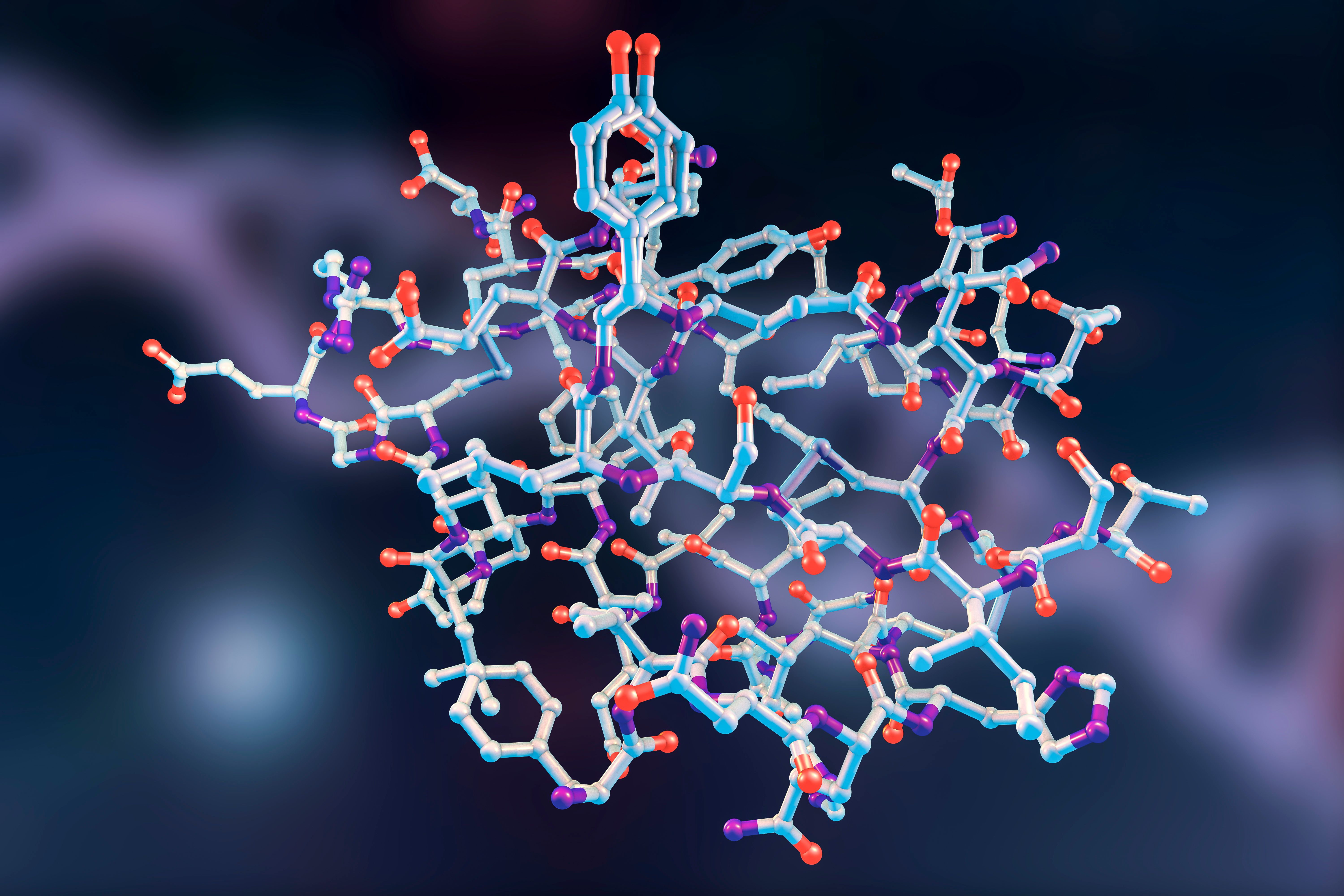Improving Fingerprinting of Therapeutic Peptides Using Ternary Eluent Compositions in Supercritical Fluid Chromatography (SFC)
This study highlights the benefits of using ternary eluent compositions in SFC for separating peptides.
A recent study published in the Journal of Separation Science explored using ternary eluent compositions in supercritical fluid chromatography (SFC) for separating peptides (1). The research team conducted an experiment that examined the benefits of adding acetonitrile to methanol as a modifier in SFC. The study uses three cyclic antibiotic peptides as model substances to optimize the ternary mixture of carbon dioxide, methanol, and acetonitrile to increase the resolution of a peptide's fingerprint.
Molecular model of insulin molecule peptide, 3D illustration | Image Credit: © Dr_Microbe - stock.adobe.com

Therapeutic peptides are short chains of amino acids that can be used to treat various medical conditions. They are designed to interact with specific targets in the body, such as receptors or enzymes, to produce a therapeutic effect. Because of their high specificity and low toxicity, therapeutic peptides have gained interest as potential alternatives to traditional small-molecule drugs. However, the development and analysis of therapeutic peptides present unique challenges because of their size, complexity, and heterogeneity.
One of the major findings of the study is that the varying compositions of methanol and acetonitrile change the elution order of the analytes, which is a valuable tool during method development. The researchers also propose a generic method development protocol applicable to polypeptides. The study's results provide insight into the effective separation of complex peptide samples, containing the main compound, isomers, degradation products, and related substances from manufacturing, using orthogonal and complementary technologies.
Polypeptides are of growing interest as therapeutics because of their high binding affinity and low prevalence of side effects compared to conventional small drug substances. However, regulatory requirements for their chemical analysis have increased because of the growing number of registered drugs. Reversed-phase liquid chromatography (RPLC) is the central analytical technique used. However, RPLC often cannot achieve the separation of all compounds contained in peptide samples. Therefore, complementary technologies, such as SFC, are valuable for gaining a more comprehensive knowledge of a particular sample.
The study used an individual gradient method that required the use of two Torus 2-PIC columns, carbon dioxide, and a modifier consisting of acetonitrile, methanol, water, and methanesulfonic acid (60:40:2:0.1, v:v:v:v) to optimize the separation of the three cyclic antibiotic peptides. The authors suggest that the ternary eluent composition could be useful for separating other peptides with similar properties.
In conclusion, this study highlights the benefits of using ternary eluent compositions in SFC for separating peptides. The method offers increased resolution of the peptide's fingerprint and a valuable tool for method development. The authors' proposed generic method development protocol applicable to polypeptides offers insight into the effective separation of complex peptide samples.
Reference
(1) Neumann, J.; Schmidtsdorff, S.; Schmidt, A.H.; Parr, M. K. Ternary eluent compositions in supercritical fluid chromatography improved fingerprinting of therapeutic peptides. J. Sep. Sci. 2023, ASAP. DOI: 10.1002/jssc.202201007
Separating Impurities from Oligonucleotides Using Supercritical Fluid Chromatography
February 21st 2025Supercritical fluid chromatography (SFC) has been optimized for the analysis of 5-, 10-, 15-, and 18-mer oligonucleotides (ONs) and evaluated for its effectiveness in separating impurities from ONs.
Green Chemistry: What is it (and What Is It Not)? And How Does It Apply to Gas Chromatography?
October 31st 2024Everyone is talking about sustainability, and organizations are creating sustainability programs. But what does green chemistry really mean, and how does it apply to gas chromatography?
